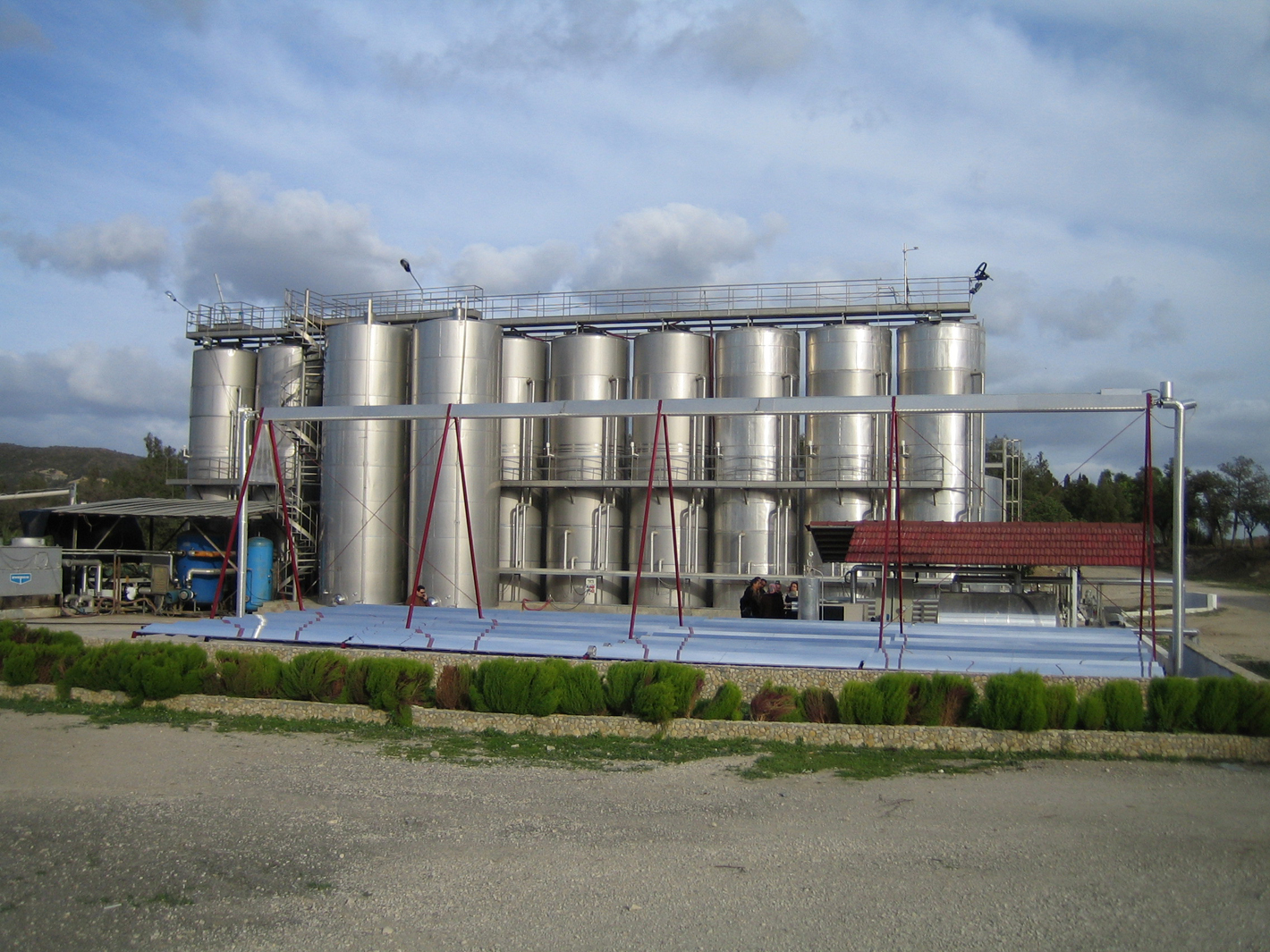Sunlight with cooling factor
Although it sounds like a contradiction in terms, using the power of the sun for refrigeration is proving to be an original energy concept. In Tunisia and Morocco, Fraunhofer research scientists are using solar energy to keep perishable foodstuffs such as milk, wine and fruit fresh.

»Refrigerated by sunlight« – we could well see an ecostatement like this printed on food packaging in the years ahead. Solar energy is already being used to power air-conditioning systems in buildings, but now researchers also want to refrigerate fruit and other perishable foodstuffs using energy from the sun. Scientists from the Fraunhofer Institute for Solar Energy Systems ISE in Freiburg are demonstrating that this is feasible in the Mediterranean region using the examples of a winery in Tunisia and a dairy in Morocco. In the MEDISCO project (short for MEDiterranean food and agro Industry applications of Solar COoling technologies) solar plants for refrigerating milk and wine have been installed in cooperation with universities, energy agencies and European companies. The project funded by the European Commission is run by the Polytechnic University of Milan.
»Our method is ideal for countries which have many days of sunshine and in remote areas where there are no conventional means of refrigeration owing to a lack of water and non-existent or unreliable energy sources. It is environmentally friendly and reduces the use of expensive electricity for conventional refrigerators to a minimum,« states Dr. Tomas Núñez, scientist at the ISE, listing the system’s advantages. »Refrigeration is always available when the sun shines, which means that it is produced at the times when demand is at its highest.«
The scientists have installed concentrating collectors which direct the sunlight onto an absorber by means of a reflector. This makes it possible to convert the solar radiation into hot water with a temperature of 200 degrees. »This extreme water temperature is necessary in order to drive the absorption refrigeration machine for the high external temperatures that prevail there. We do not use electricity to provide the refrigeration, we use heat. The result is the same in both cases: refrigeration in the form of cold water or – in our case – a water-glycol mixture,« explains Núñez. As the absorption refrigeration machine produces temperatures of zero degrees, the experts use the mixture to prevent the water from freezing. The water-glycol solution is collected in cold accumulators and then pumped through a heat exchanger, which cools the milk. »We use a slightly different system for wine, with the refrigerant flowing through coiled pipes in the wine tanks,« says Núñez.
»MEDISCO is a demonstration project. The system is not yet ready for the market, but I am certain it will be possible in future to use solar refrigeration on farms and in the chemical and cosmetics industries,« the research scientist adds.